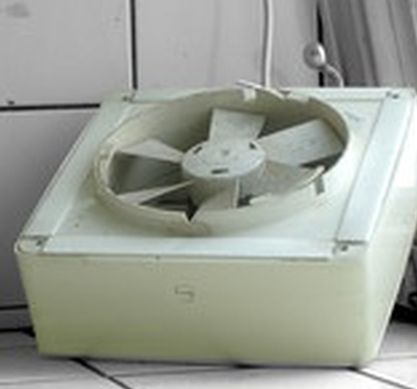Podcast: Play in new window | Download
Subscribe: RSS

The government ordered ventilators for sick people, and this is what it got. Just kidding. The reality is far worse.
Proposition: Let’s run government like a business, because business doesn’t have waste and fraud and laziness and incompetence like government has. But of course there are some things business simply won’t do because they don’t make any money. So let’s have public-private partnerships, in which government does the things that cost money, and business does the things that make money. What could possibly go wrong? Well, let’s see.
In 2006, the Department of Health and Human Services recognized a gaping chink in the country’s armor against infectious illness. It estimated that to deal with a moderate influenza pandemic, it would need 70,000 more ventilators than it had. Now, no business is going to buy machines that it won’t be able to use until some future emergency because, why would you? Yet the government saw the need.
So in 2008, a mere two years after wheezing into action, the government requested proposals from companies that could produce the ventilators, with the government paying for their design and development and then buying at least 40,000 of them for the national stockpile. (I thought we needed 70,000, but never mind.)
The government wisely specified that the machines should be smaller, more portable and cheaper than the standard ventilators then in use — they should sell for around $3,000 instead of $10,000 plus. The winner was Newport Medical Instruments, a small California company that was owned by a Japanese medical device company. Newport received $6.1 million upfront.
In April 2012, a mere four years later, Health and Human Services told Congress that the program was “on schedule to file for market approval in September 2013.”
Suddenly everything changed. In May 2012, Covidien, a huge medical device manufacturer with $12 billion dollars in annual revenue, agreed to buy Newport for $100 million. At the same time it was buying five other similar companies. Developing inexpensive portable ventilators no longer seemed like a top priority. The company dithered, demanded more money from the government — they got $1.4 million — and raised the eventual price on the eventual ventilators. Still the deal was not profitable enough for the new owners, and they sought to cancel the contract.
The government agreed in 2014. After eight years of spending about a million dollars a year, not a single ventilator had been added to the government stockpile. So the government in 2015 wrote a new contract and a check for $13.8 million dollars to a subsidiary of the gigantic Dutch company Royal Philips, to start over.
Things went better this time, and in September of 2019, a mere four years later — lightning speed for government work — the design was approved and 10,000 units ordered for the national stockpile, for just over $3,000 each.
Not a single unit has been delivered. Meanwhile, however, the company has been selling a more expensive version of the design — the design paid for by the US government — around the world.
Last Friday, President Donald Trump invoked the Defense Production Act to compel General Motors to begin mass-producing another company’s ventilator under a federal contract. But neither Trump nor other senior officials made any mention of the ventilators designed at public expense, already ordered, but nowhere in sight. One has to wonder whether Trump and his people even know about the program’s existence.
Now we are in the middle of the emergency, re-learning a lesson taught many times before to an amnesiac nation: you don’t know the value of water until the well runs dry, and then it’s too late. If profit is to be the only value we use to make decisions, we will forever be helpless in the face of emergencies that make profits irrelevant, things like pandemics, hurricanes, droughts, sea level rise, famine and war. To name a few.
Business can’t stand to forgo profits to prepare for emergencies. That is why government cannot — must not — be run like a business.
“Ventilator elfenbein in schwarzweiß” by finemsequi is licensed under CC BY-NC 2.0
Holy fraud, waste & abuse, Batman!
All bow down to Holy Profit! The god demands sacrifice, human sacrifice, to keep the winners in comfort and luxury.
Great research work!
Confucius said, “The superior man understands what is righteous; the mean-minded man understands what is profitable.” (Analects 4:16)
Confucius said, “Acts motivated by profit are an endless source of enmity.” (Analects 4:12)
My personal Holy Trinity of anti-Capitalism, Confucius, Jesus, and Buddha.
Sorry, Christians! I know you want to keep that side of the Savior wrapped up in a closet, but Jesus stood well to the left of Marx on these type of issues.
Also, I have a Warning for you: Do you really think the Prosperity Gospel, and other such similar belief “systems,” sits well with Him up High in Heaven? Or do you think it possible that Jesus is right now hitchin’ up his trusty steeds, old War, Famine, Pestilence, and Death, and He’s coming for you first?
Remember what He said about hypocrites … no, I’m sure you don’t.
How about the ones delivered from storage that DO NOT WORK! If they have lithium Ion batteries and they go dead over time (or any time) they will not take a recharge. Ni Cads are much more robust although they do not have as much storage capacity.
Yeah, government should not be run like a government, either.